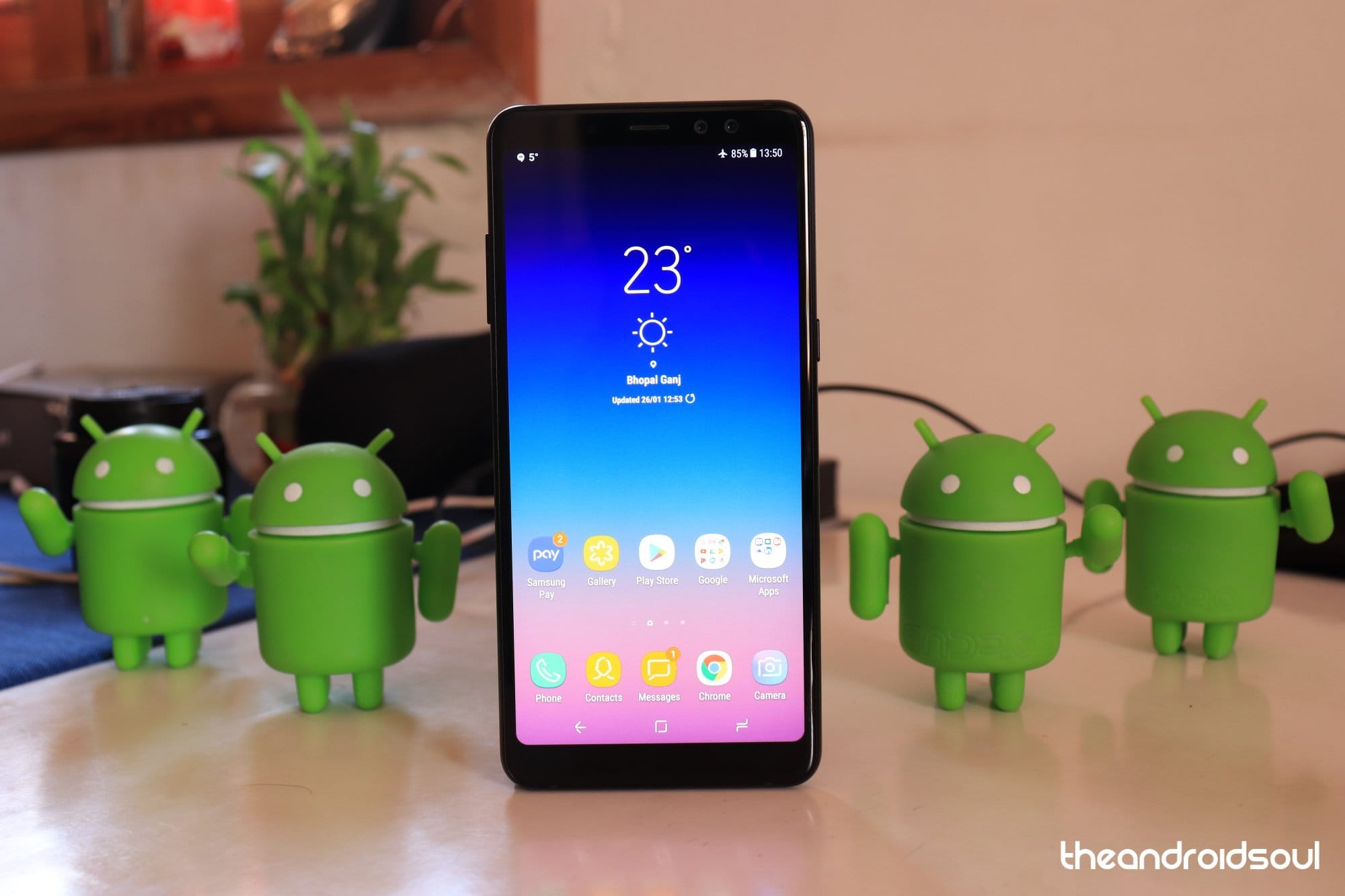Google often uses alphabet letters to name its Android versions and it’s clear that the company is fast making its way down the line. The search giant announced the next version of its popular OS, Android 9, on August 6, 2018 and it’s christened Android Pie. So, let’s check out all you need to know about the new Android 9 Pie.
In a nutshell
- It’s Android 9, not Android 9.0 (in case you are wondering)
- And it’s labeled as Android Pie
- We figured it could be called Android Pie, or even the pumpkin pie, but you know who won!
- Available for Pixel, Pixel XL, Pixel 2, Pixel 2 XL, and Essential Phone
- Will come pre-installed on the Google Pixel 3
What will the next Android version be called?
For years now, Google names its Android OS versions after sweet puddings and alphabetically as shown below. Our initial guess for Android P had us hooked on names like Pancake, Pie, Peppermint, and Pineapple, but we all know the name-anticipation fun is now dead and gone! Google has confirmed that Android 9 is called Android Pie. That’s it.
- Android Cupcake
- Android Donut
- Android Eclair
- Android Froyo
- Android Gingerbread
- Android Honeycomb
- Android Ice Cream Sandwich
- Android Jelly Bean
- Android KitKat
- Android Lollipop
- Android Marshmallow
- Android Nougat
- Android Oreo
- Android Pie
As far as we know, the next version of Android OS will be Android Q. What’s your guess? Whether “Q” will stand for Queijadinha, Qurabiya, Quindim, Qottab, Quesito, or whatever name, your guess is as good as ours.
When will my device get Android Pie?
Check out our Android Pie release date page for expected launch dates of all the major phones from all the popular OEMs.
→ Android Pie release date information
During the beta testing program, Android Pie wasn’t limited to Google Pixels. For the first time, the devices below from non-Google vendors got the nod to try the OS ahead of release and while the Essential Phone matched Google in releasing the Pie update on the same day, we expect the rest to join the party very soon:
Android 9 Pie features
As noted in the Android Pie announcement post for the list of new features in Android 9.
| Android 9 Pie feature | What is it? |
| App Actions | THIS IS BIG! This feature recommends actions using AI. It would try to figure out what you are gonna do next, and thus what you may need next, and get you that when you fire up the app drawer. It may suggest to you stuff based on your location, time of the day, and even when you do something like connecting a headphone. |
| App slices | Slices gets you a slice of the app which is a feature that the Android system thinks is what you need when you are looking for that app. It is cool! |
| Gestures | Yes, gestures — finally — for navigations. It’s dead smooth on Pixel, and we are totally loving it. Makes switching to previous apps a breeze with the addition of a slider at the bottom after swiping for the overview window. |
| Digital Wellbeing | This is all about making you not use the phone all the time. And we needed it. Desperately. |
| — Dashboard | Gets you a quick idea of apps you use on your phone, how many notifications you get, and how often you keep checking your phone. |
| — App timers | Lets you set a usage limit for apps. So that the system will warn you already when you are about to reach the pre-defined usage limit to prevent you from overusing the app and phone. |
| — Wind down | Set a schedule to enable the DND mode and also turn screen gray during the defined period. |
| — Do Not Disturb | It now turns the screen to grayscale while also obviously disabling the notifications, except calls from starred contacts. |
| Display Cutout | You may already know this but yes, the Android 9 Pie officially supports the notch. |
| Smart replies | This is probably already available, but Google has made it official with Android 9 Pie. Messenger apps will get the cool ‘smart reply’ feature from Google. Should help you a lot. |
| Better notification management | Can turn off notifications for a range of apps, and the system may even ask you to stop receiving the certain kind of notifications once you dismiss them. Age of AI, hell yeah. |
| Adaptive battery | Optimizes background process of apps based on your usage to prevent battery drain. The system will also warn you of excessive battery usage by apps in the Settings when it detects it. |
| Adaptive brightness | Changes brightness levels automatically based on your usage and mainly, time of the day |
| Dark mode | For years Android users have been asking for official support for dark mode and its finally here, hidden in the Settings menu. |
| Nifty screenshot tools | To capture a screenshot, simply press and hold the Power button and tap “Screenshot.” You can still go the Power+Volume-down buttons combo. You can also edit the screenshot after capturing it. |
| Up to five Bluetooth devices | In the latest Android Pie update, you can pair up to five Bluetooth devices to your phone and control each of the device’s volumes individually. Google also says switching between the Bluetooth devices is seamless. Android Pie also remembers each paired device’s volume level. |
| Accessibility Menu | When enabled, the new Accessibility Menu provides easily accessible shortcuts for things like launching the Google Assistant, opening app switcher, taking screenshots and more. You’ll see an icon of the Menu in the navigation bar when enabled. |
| Mobile hotspot | Your device’s mobile hotspot will automatically turn off if Android Pie detects that no devices remain connected. You can disable this option via the Advanced section in the Hotspot settings menu. |
| Lockdown Mode | This mode temporarily blocks the use of a fingerprint scanner or face unlock on the lockscreen. You’ll need your passcode or pattern to unlock the device. To enable this mode, go to Settings > Security & location > Lock screen preferences and tap “Show lockdown option.” |
| Magnifying glass when highlighting text | Android Pie will display a magnifying glass when text is highlighted, something that has been in demand for ages. |
| Ambient Display | The Ambient Display in Android Pie now shows the weather and battery percentage. |
| Rotation button | This button lets you rotate the screen of individual apps even when the auto-rotate mode is disabled. This rotation button doesn’t affect the default auto-rotate settings. |
| Media controls are now a priority | Prior to Android Pie, pressing the volume buttons when listening to music, for instance, would only adjust the system volume instead of the music volume. In Android Pie, the volume keys’ default action would be to control media volume. There’s also a new look for the volume controls. |
| New overview screen | In past versions of Android, the recent apps menu displayed windows in vertical format with one on top of each other, thus obscuring the content of the screens. In Android Pie, the arrangement is now horizontal and each screen is on its own, meaning you can easily see what’s going on in each screen in the recents menu. |
| Notification preview displays images too | In the notifications preview, Android Pie will also display images in the message instead of just text, but this will only be possible in supported apps, so make sure your developer does so. |
| Changes in settings | In Android Oreo, there were separate tabs for Backup, Reset, and System updates, but in Android Pie, all three can be found under one tab – Advanced. |
Available for download for Pixel, Pixel 2, and Essential Phone
As expected, once the Android Pie became official, the update became available for download for the all the four Pixel handsets too (Pixel, Pixel XL, Pixel 2, and Pixel 2 XL), but there was also one surprise package – the Essential Phone.
For the Google Pixel mobile phones, you can download the Android Pie firmware from here, and OTA here.
What are your thoughts on the Android 9 Pie?
If you have any query about the Android Pie release or anything else, do ask us in the comments section below.













Discussion